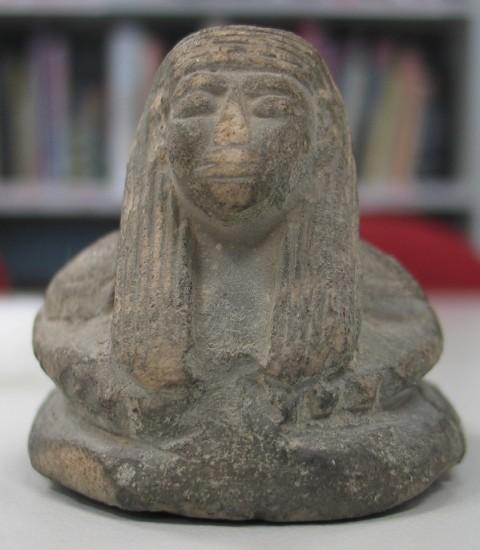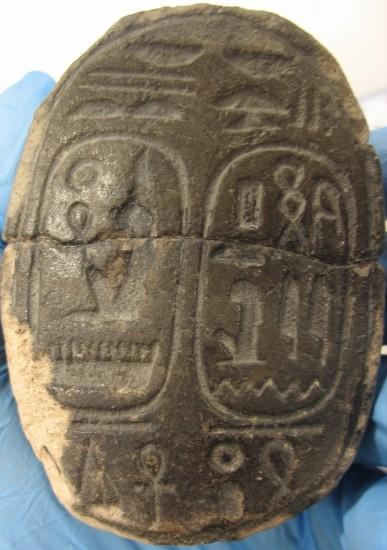An ancient Egyptian souvenir?

A little while back I blogged about an ancient cuneiform tablet collected by a member of the AIF in Mesopotamia and whether it was genuine or not. Recently, while looking at items collected by soldiers while training in Egypt I came across a wonderful 'ancient' Egyptian scarab. This scarab has the head of sphinx and, from parts that had chipped away, appeared to be made from clay with a grey glaze, making it look like stone.

On its base someone has attempted to carve the cartouche of Sety [Seti] I. However, the inscriptions above and below are garbled and have no meaning.

This item was collected by Arthur Charles Gunter while training in Egypt in late 1914-early 1915. When he acquired it, Gunter was told it had been dug up from near the pyramids, only several miles from the Australian training camp at Mena. He related this information to Memorial staff when he donated it a decade or two later. Gunter enlisted in the AIF in August 1914 when he was 44 years old. After training in Egypt he landed at Gallipoli in April 1915, where he served until October, when he was wounded in the spine. Gunter was sent to England for medical treatment and recovery.
Selling replicas as genuine antiquities has been a big business in Egypt for hundreds of years so when I first saw this my feeling was that, unless Gunter dug it up himself (which seemed unlikely based on what he told staff ), it was most likely made during the First World War, not thousands of years before. The number of soldiers travelling through or training in Egypt would have been an absolute boon for the souvenir sellers, including those selling "genuine" antiquities. An expert at the British Museum confirmed that it was not genuine but an object inspired by ancient Egyptian items. Despite this it is still very interesting and while it is not an antiquity it certainly is an antique as it is nearly100 years old.
Interestingly, about a month after establishing the sphinx scarab was not ancient, I came across something described as a "souvenir Sphinx paperweight" (REL/15229 above) which was very similar to the sphinx scarab I had been looking at. The style of it and the inscriptions on the base are a little different from the other one but it is the same style of item. Interestingly there does not seem to have been any confusion with the soldier who collected this item, 1285 Sergeant David Roberts, that this object was an antiquity. He seems to have known it was just a souvenir.
